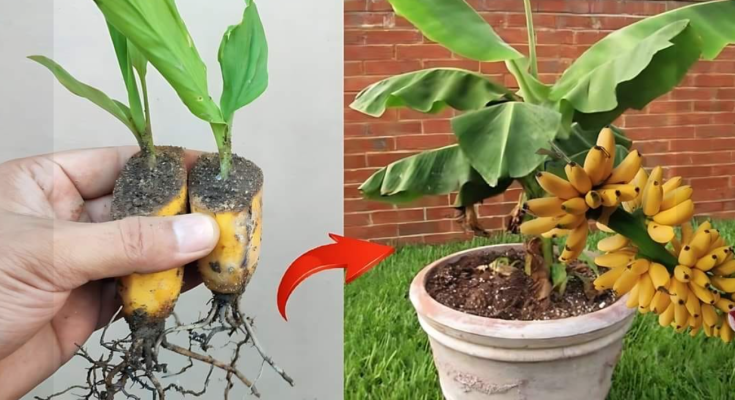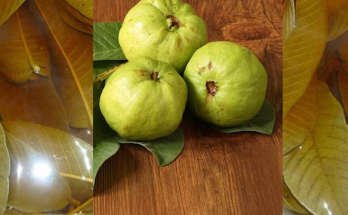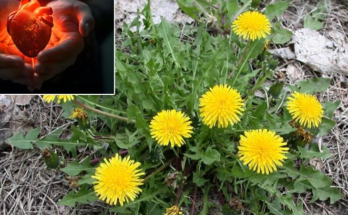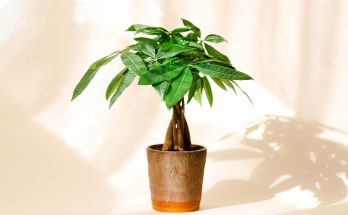The first question that you may ask certainly is this one:
– Will a banana tree growing in a pot bear fruit?
– The answer is YES, Why Not? It is possible. A banana tree can bear fruits in a pot as prolifically as a banana tree on the ground. Only, it may take up to 3-5 years to fruit if grown from seeds.
About growing banana trees in pots
The banana is a fast-growing plant with lush green leaves that can give any place a tropical look and feel. Many varieties of the banana become excellent houseplants that don’t need too much care and grow up as quickly as a beanstalk.
The so-called “dwarf varieties” of banana trees can grow anywhere between 2 – 4 meters, compared with the ordinary banana tree variety that can reach up to 15 meters height.
Growing banana trees in pots in tropical climate
Growing a banana tree in a container in tropical climate is extremely easy since it takes little-to-no care. If you live in USDA Zones 9 to 11, keep your young banana tree in shade in afternoon in summer. All the other requirements are similar to the requirements for temperate zones.

These are the banana varieties you can grow in pots or indoors
These dwarf varieties of banana tree reach only 1.5 – 4 m (4 – 12 feet) which makes them suitable for growing in containers. You can also grow these banana varieties indoors:
Dwarf Red
Dwarf Cavendish
Dwarf Brazilian
Dwarf Jamaican
Rajapuri
Williams Hybrid
Gran Nain
Dwarf ‘Lady Finger’
But if you prefer to grow ornamental varieties of banana, check out these ones:
Ensete ventricosum
Musa sikkimensis – ‘Red Tiger’
Musa ornata
Requirements for growing a banana tree in a pot
1. Soil
Growing a banana tree requires a well-drained, sandy soil that is rich in organic matters and compost. So, first buy high quality potting mix for your banana tree. If you are making it at home, make sure to mix sand, perlite and compost or manure.

The banana needs slightly acidic to neutral soil to produce tasty and potassium-rich nutritious bananas. The soil pH should be around 6 – 7. But, if your soil is too alkaline, you should mix it with sulfur to decrease the soil pH value.
2. Watering
Bananas love good moisture. So, water the banana plant regularly and deeply, but care not to overdo it.
Stick to these requirements:
– Water the banana plant every day in summer.
– It may need watering even twice daily in hot weather or when it is root bound.
– The soil for growing banana plants should be kept uniformly moist ( that is don’t let it dry out and then overwater it!).
– Reduce the plant watering in winter to avoid diseases.
3. Sun exposure
It is known that banana trees grow in tropical and subtropical belts of the world and therefore they love full sunlight, heat and humidity. If you are growing a banana tree, you should keep it in a spot that receives sun for the most part of the day, but preferably sheltered from strong wind.
Taking additional care of a banana plant in pot
Humidity
The banana plant ‘prefers’ humidity levels above 50 percent. In order to increase humidity level around the plant, mist the plant and place it on a layer of pebbles in a tray filled with water.
Overwintering banana tree
Banana plants stop growing when temperature level drops below 10°C (equals 50° Fahrenheit). So, before the onset of winter, do some heavy mulching and pruning of the leaves. Put it in a warm, bright room till the spring.
Fertilizing
Since the banana is a fast-growing plant, it requires heavy feeding to grow at its full size. Fertilize a young plant when it establishes well with nitrogen-rich fertilizer to help it grow faster. Once your banana tree is in the pot, fertilize it with 15:5:30 fertilizer regularly until it become mature enough to produce fruit.
Pests and diseases
Bananas are naturally resistant to diseases. Still, when you see the leaves turning brown and drying at the edges it means you are overwatering it. If the leaves turn yellow, it signals that the banana plant is having lack of nutrients.



